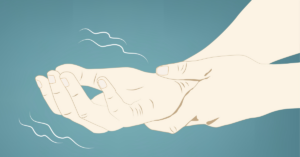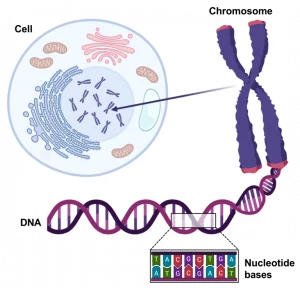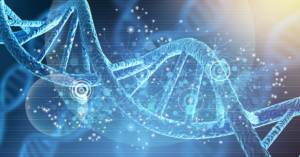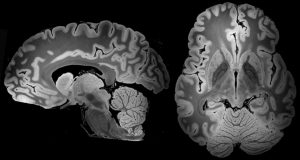
Snapshot: What is Tremor?
If you’ve ever felt shaky when speaking in public or after drinking too much coffee, then you’ve likely experienced tremor. Tremor is an involuntary, rhythmic shaking of parts of the Read More…
Bill Nye is back in his lab with NAF and Biogen—breaking down the science of Friedreich Ataxia in a new video series. WATCH NOW
A collection of resources for individuals and families affected by Spinocerebellar Ataxia type 50 (SCA50) .
Spinocerebellar Ataxia type 50 (SCA50) is caused by a genetic mutation that is passed on from parents to their children. SCA50 leads to problems with balance and coordination, as well as eye movement abnormalities.
For complete information about symptoms, diagnosis, and treatment of Ataxia, visit our What is Ataxia? page. This page contains NAF’s resources that are specific to SCA50.
Sign up for our mailing list to stay up-to-date on Ataxia news.
Presented by Giovanni Stevanin, PhD
This webinar gave an overview of the at the causes and symptoms of the disease, the typical diagnostic journey for those affected, what to expect for clinical care, and an overview of current research into Spinocerebellar Ataxia Type 50 (SCA50).
NAF offers webinars on many topics to help you live better with Ataxia. Visit www.ataxia.org/webinars to find other helpful presentations.
Participating in a research study or clinical trial is one way to take an active role in furthering understanding and treatment of Ataxia. It is also a way to get access to new treatment options before they are widely available. To find studies that are enrolling patients, visit our Help Develop New Treatments page.
Spinocerebellar Ataxia type 50 (SCA50) is a rare neurodegenerative disorder. It is caused by a missense mutation in the NPTX1 gene. SCA50 is very rare worldwide, with only a handful for families known to have this condition. However, as NPTX1 genetic testing becomes more widely available, more individuals are being diagnosed with SCA50.
Like many other forms of Ataxia, SCA50 is marked by poor balance and coordination. In fact, the word Ataxia means incoordination. There can also be problems coordinating muscles that control speech, swallowing, and vision. Other potential symptoms include tremor and cognitive impairment. The severity of SCA50 symptoms may vary considerably between patients, even within families. More research is needed to better understand the symptoms of SCA50.
SCA50 symptoms usually begin in adulthood. However, a few cases of symptoms beginning in childhood have been reported.
SCA50 usually progresses very slowly, with patients eventually needing the use of a wheelchair. Treatments such as physiotherapy, occupational therapy, and speech-language therapy can significantly improve the lives of people with SCA50.
SCA50 is a genetic disorder which means that it is an inherited disease. The abnormal gene responsible for this disease is passed along from generation to generation by family members who carry it. Genetic diseases like SCA50 occur when one of the body’s 20,000 genes does not work properly. Genes are microscopic structures within the cells of our bodies that contain instructions for every feature a person inherits from his or her parents.
SCA50 is an autosomal dominant disease, meaning individuals of either sex are equally likely to inherit the gene and develop the disease. Each child of a person with SCA50 has a 50% chance of inheriting the gene that causes SCA50.
Gene tests can be performed for diagnostic purposes to determine what kind of Ataxia is within a person or family. Genetic testing can also be done, in some circumstances, even before there are symptoms, to determine whether a person carries the abnormal gene or genes that cause Ataxia. This is called predictive or presymptomatic testing. A gene test can also be used to determine whether a fetus has an abnormal Ataxia gene. This is called prenatal testing. Anyone who is considering a predictive or prenatal test should consult with a genetic counselor to discuss the reasons for the test, the possible outcomes, and how those outcomes might affect the person emotionally, medically, or socially.
A neurologist is often the most helpful specialist in recognizing symptoms and diagnosing the disease that causes Ataxia. A neurologic examination can determine whether a person has symptoms typical of SCA50. MRI brain imaging may be used to confirm cerebellar atrophy. A definitive diagnosis of SCA50 is established following genetic testing. This confirms that someone has a mutation that causes SCA50 in their NPTX1 gene.
SCAsource provides Ataxia research news, directly from researchers to the Ataxia community. Visit SCAsource to see their full collection. Here is a collection of articles about Ataxia Type Here. SCA50

If you’ve ever felt shaky when speaking in public or after drinking too much coffee, then you’ve likely experienced tremor. Tremor is an involuntary, rhythmic shaking of parts of the Read More…

Speech intelligibility refers to how many words can be correctly understood by a listener. For example, if someone says the phrase, “My name is John,” and a listener hears, “My Read More…

Written by Ziyang Zhao Edited by Dr. Hayley McLoughlin A newly developed smartphone application will allow patients to assess ataxia at home. There’s an interesting problem in science that’s often Read More…

A gene is the basic physical unitof heredity. Every living cell contains genetic information that determines an organism’s development, form, and function. This genetic information is encoded by two macromolecules: Read More…

Ataxias can occur due to a multitude of reasons. One way a patient might acquire ataxia is from an accident or an injury – not as a result of genetics. Read More…

What is it? Magnetic resonance imaging (MRI) is a type of technology used to take detailed pictures of the body. It is commonly used to detect abnormalities in the body, Read More…
